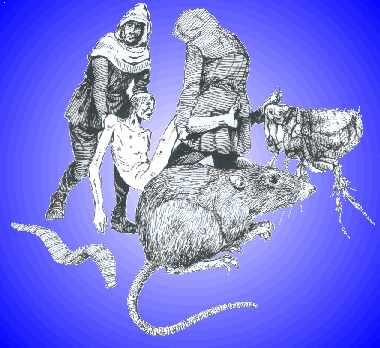PARASITES
The relationship between a pathogen and the organism it infects is essentially that of a parasite and its host. A parasite is an organism that obtains nutrition from the body of a host organism in a way that harms the host. The parasitic lifestyle of a pathogen lets it to take advantage of the host and to become dependent upon the host organism for its survival.
Fleas are ectoparasites. This means that they get their nutrients from the skin or from the body fluids such as blood. They rarely cause serious disease by themselves, usually just symptoms like itching.
Endoparasites live inside their hosts. They include all viruses and bacteria. Some can live and reproduce only in hosts' cells; others infect a particular organ or region of the body, such as the intestines. They have killed more humans than anything else.The symptoms of a disease caused by a parasitic organism are the effects of the parasite destroying cells, producing toxins or taking the host nutrients.
Skin is an effective barrier to most microorganisms. Human skin contains glands that secrete chemicals highly poisonous to many bacteria.
Places in the body where microorganisms could enter - the eyes, mouth, and nose - have extra defences. Tears produced by lachrymal glands help to wash microorganisms off the eyes. Parasites that enter the digestive system are usually destroyed by acid in the stomach. The sneeze reflex when dust enters the nose helps sending the microbes away. But this is a common way for viruses to be carried through the air in microscopic bubbles.
